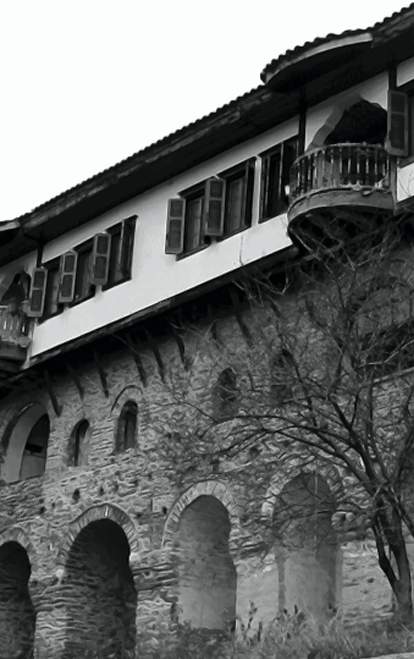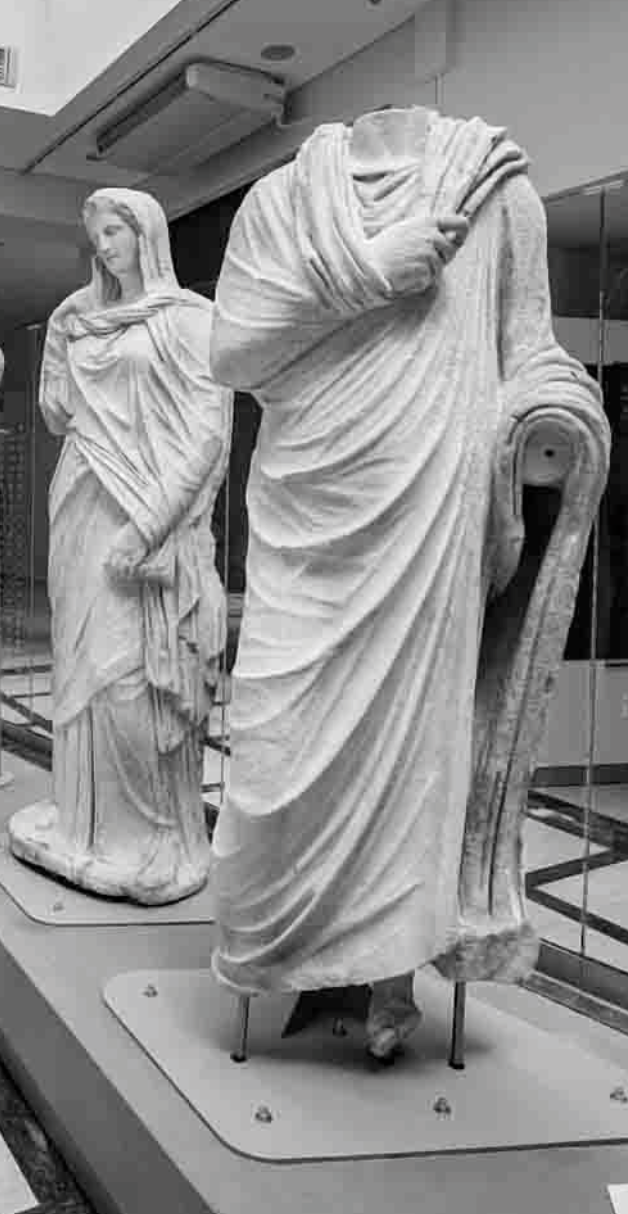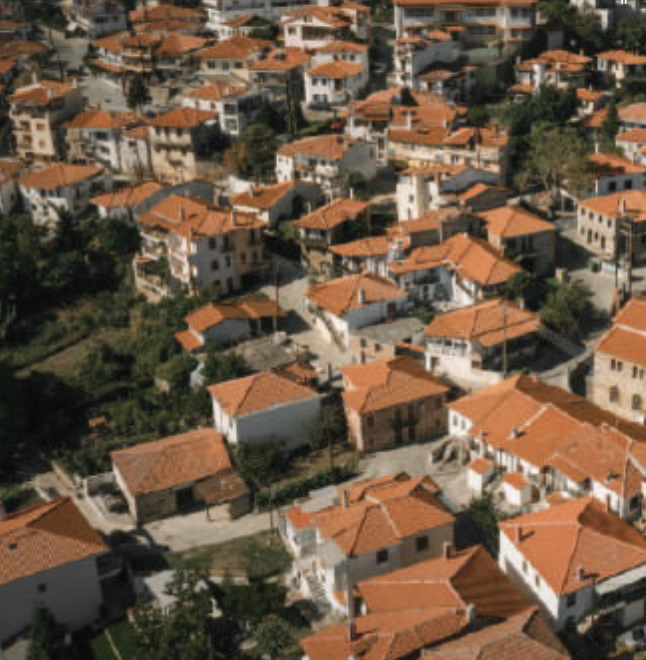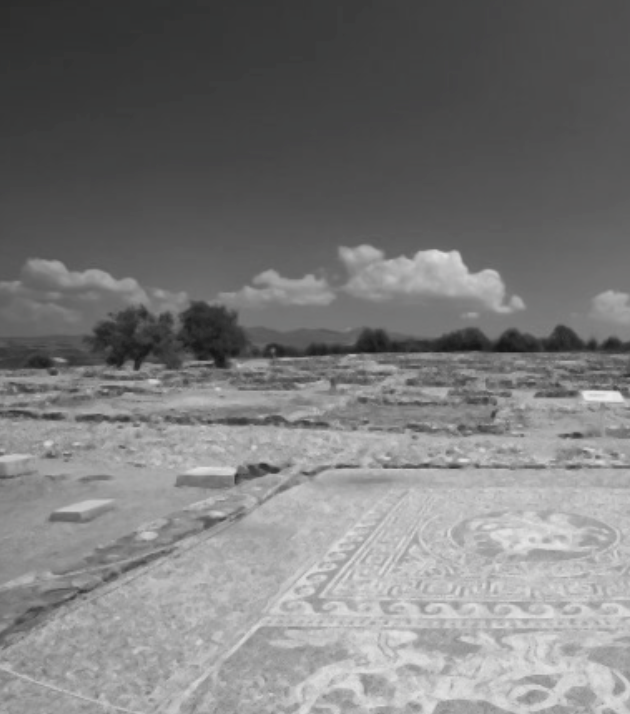Start having as your destination Agia Anastasia, a lowland village in the northwestern part of Chalkidiki, on the provincial road that connects it Thessaloniki. Attractions in the area include: the Stavropegic Monastery of Agia Anastasia of Farmakolytria, northeast of the settlement, the chapel of Ai – Lia in the northwest and the monument of Captain Hapsa, south of the settlement – a fighter of the Revolution who was killed in the long-dead battle of Vasiliko of Chalkidiki. The Monastery of Agia Anastasia of Farmakolytria is one of the most important and historic in Macedonia, founded in the early 16th century and flourished until the 17th century. However, it was burned down in 1821. Walk inside and admire its grandeur.
Day 1

Head to Galatista, one of the oldest villages in Chalkidiki that is worth a visit since it is of great historical interest because it hosts a number of churches and preserved Macedonian mansions. In fact, the builders from the area and the region of central Macedonia were among the best of the time. The symbol of Galatista is the Byzantine Tower of Galatista, which dates back to the Venetian era. It was likely used to store water in the area, a fact confirmed by the watermills and water tanks that were found there. These, along with the raki cauldron and the olive press that were also found nearby, indicate the productive activities of its inhabitants. Wander around the village and enjoy your coffee or even your meal.
Vavdos is the next destination, a mountain village built on green hills with traditional houses and paved alleys. Tour the neighborhoods of the village, climb the mountain and reach the chapel of Prophet Elias from which you can admire the wonderful view. In the kindergarten building there is a folklore museum with exhibits from the daily life of the people of the village, which you can visit. In the central square of the village - with the tall plane trees - notice a huge plane tree that is a trademark of the area and was designated in 1976 as a “preserved monument of nature».
Then, transfer to the capital of Chalkidiki, Polygyros, built amphitheatrically on the slopes of Prophet Elias at an altitude of 560m, at the foot of Mount Holomontas. You can tour its center, admire the beautiful and traditional buildings and its picturesque squares and enjoy your meal in one of the famous restaurants of the area. You also have the option of spending the night in Polygyros.
Event - Festival
Vavdos

Galatistas


Polygyros

Day 2
To start the 2nd day, visit the archaeological museum of Polygyros, in Iroon Square, which. hosts findings from all over Chalkidiki, from the Bronze Age to the Roman period. The museum’s exhibits include ceramics and metalwork products from the late archaic and classical periods, sets of offerings from the cemetery of ancient Akanthus, findings from Olynthos, tombstones from Potidea, etc. Continue your tour with a visit to the folklore museum of Polygyros, housed in the home of the former Mayor of the area, Athanasios Karagkanis, and then to the historical and folklore museum / Kotsianos Home in order to admire its unique architecture.
It is the most important archaeological museum of Chalkidiki, located in the center of Polygyros, in Iroon Square. It hosts representative archaeological 昀椀ndings from the entire region that convey a great history, dating back to prehistoric times. The museum’s exhibition is developed in 4 thematic sections: 1. Place and History, 2. Prehistoric Societies, 3. Historical Times, 4. Collections and Donations. The museum presents 昀椀ndings from the most important prehistoric settlements and cemeteries of Chalkidiki, Agios Mamas, Olynthos, Toroni, Kriaritsi, Nea Skioni.
Visiting information:
Daily except Tuesday
Opening hours: 08:30am - 3:30pm
Contact phone: +30 23710 21330
Address: Iroon Square, Polygyros

The museum was created in 1995, it is located in the center of Polygyros and is housed in the two-story home of the former Mayor of the area, Athanasios Karagkanis, who donated it for this purpose. All the exhibits of the museum have come from donations from locals and concern a variety of objects such as traditional furniture, everyday objects, tools used in agricultural work. The Women’s Voluntary Association for Community Development of Polygyros contributes decisively to the creation and maintenance of the museum’s operation.
Visiting information:
Address: Karagkanis House, Polygyros
Contact Tel: +30 23710 21420
The Kotsianos house is located opposite the Metropolitan Church of Agios Nikolaos and is a characteristic urban example of Macedonian architecture. After its reuse, it operates as a Historical and Folklore Museum. It is worth visiting to admire its great architecture.
The next stop is Taxiarchis, a village located at an altitude of 670m in the heart of Holomontas. It is built on two slopes, one western and one southeastern and between two natural springs: Sipotura and Kato Pigadi. It is famous for its mushrooms, wild herbs, mountain tea and agro-food products such as local potatoes and beans.
The destination is ideal for all seasons of the year for hiking and, for the more adventurous, for mountain biking. Within Taxiarchis, there is the Taxiarchis University Forest, which occupies an area of 58,000 acres on the southern and western slopes of Holomontas. It is a representative forest of broadleaf species of the Greek territory and regenerates naturally.

The 昀椀nal stop of your tour is ancient Olynthos - a city of Chalkidiki built in the cove of the Toroni Gulf - the capital of Chalkida and the most important economic - military center of the region from the last decades of the 5th century BC until its destruction by Philip in 348 BC. The city was designed based on the Hippodamian urban planning system, with wide streets and had an excellent water supply and sewage system. The excavations showed that despite the financial comfort that some of its residents may have had, they could not build as they wanted since there was a clear urban plan that they followed. Cross the archaeological site and then go to the museum from which you will receive additional information about Olynthos using audiovisual media.
t is the only example of an ancient Greek city that has been excavated in its largest part and in general one of the most important. Built on the coast of the Toronean Gulf, it was the capital of Chalkida and before its destruction by Philip in 348 BC, it was the most important economic and military center of the region. The archaeological site includes the two hills and the area at their foot, where the outpost and the building that houses the infrastructure areas for visitors whereas it also hosts a photographic exhibition are located.
During four excavation periods at the site, its largest part was investigated and one of the best examples of urban planning based on the Hippodamian system of residential architecture from the classical era came to light.
Visiting information:
Opening hours: 08:00 am - 15:00 pm
Ticket price: 4€ / reduced: 2€

It is located near the village of Olynthos. It features exclusive audiovisual material that represents the history of ancient Olynthos and aims to give visitors a comprehensive picture of the archaeological site, starting from the history of the city and ending with the excavations that took place in the area.
Visiting information:
Address: Archaeological site of Olynthos, Chalkidiki
Contact number: +30 23730 91000
Event - Festival
Polygyros





Taxiarchis

Olinthos


Day 3
Starting from Polygyros and at a distance of about 20’, head towards Ormylia to visit the monastery of Ormylia/ Metochion of the Holy Monastery of Simonos Petras of Mount Athos (Holy Convent of the Annunciation of the Virgin Mary), the largest monastery in Greece with about 120 nuns, which is visited by thousands of pilgrims on an annual basis.
The monastery’s facilities are amazing, while the mosaic floors and murals are hand-painted by the nuns themselves. It has been characterized as one of the most valuable traditional post-Byzantine monasteries with important scientific staff active in areas such as iconography, social contribution through medical services, etc. Find out about the social work carried out by the monastery through the center that deals with medical prevention and research and the field of diagnosis of works of art.

Continuing north, through a lush green path and with a view at the bay of Mount Athos, the next stop is Metagitsi, a semi-mountainous village built at an altitude of 150m. In this small village, you can visit the famous Metaggitsi watermill, a masterpiece of architecture that was once a metochi of Mount Athos. You can also taste delicious dishes in one of the taverns of the settlement.
To complete the 3rd day you can go to Ierissos – the oldest and largest village of the Municipality of Aristotelis which is historically a continuation of ancient Akanthus. The settlement was rebuilt when the original one was leveled after the devastating earthquake of 1932 and as excavations have shown, it is built on the ancient cemetery of Akanthus.
It is a popular resort in the wider area, with modern tourist infrastructure, award-winning beaches and a well-kept coastal front where you can take a walk and enjoy your coffee. The area is famous for its ‘karnagia’, which are an integral part of its cultural heritage and which are worth visiting. You can also visit the Folklore Museum of Ierissos which is located within the Cultural Center of Ierissos.
Next, it is recommended that you visit Ancient Akanthus, a city of ancient Macedonia founded in the mid-7th century BC. by Ionian settlers of Andros and said to have taken its name either from the many thorns of the area or from the thorny formation of the fortification.
Its traces start from the beach of Ierissos where remains of the quay of the ancient port are preserved, however, no systematic excavation has been carried out unlike its necropolis, the research for which began in 1973 and to date over 600 tombs have been recorded. Walk along the ancient city and admire the city from the hills on which it is built.
Ancient Akanthus was a leading port city in eastern Chalkidiki and one of the most important in Macedonia. It is located in a privileged position between two sea coasts – next to Ierissos and on the road to Ouranoupoli – Mount Athos, while it spread over three hills, those of Mount Stratonikos.
It developed around the middle of the 7th century BC and became known for the wide circulation of its coins during antiquity. The walk offered on the three hills that ancient Akanthus extended over is amazing especially during spring when the place is lush green.
Event - Festival
Varvara

Stageira

Olympiada

Ormylia

Day 4
Start your day in Ouranoupoli, the last village of Chalkidiki before the monastic state. Enjoy swimming on the crystalclear beaches with the golden sand – if of course you find yourself there in the summer. Be sure to visit the Prosphorio Tower (Byzantine Tower of Ouranoupoli), a 12th century building, the largest and best-preserved Tower of Chalkidiki. On the ground floor of the Tower, there is an exhibition with antiquities from pre-Christian and Christian Chalkidiki, while the upper floor is dedicated to the refugees of Ouranoupoli and the Loch couple who lived in the tower since 1928 and supported the Asia Minor refugees who settled there for many decades.
The Tower of Ouranoupoli – an 18th century building – hosts the Christian exhibition of Ouranoupoli. In particular, on the first floor of the Tower, portable icons dating from the 18th to the 20th century, originating from various monasteries and churches of Chalkidiki, are exhibited. On the second floor, Christian 昀椀ndings from excavations carried out in the area are presented, while an icon of the Virgin Mary and Christ dating from 1728 attracts particular attention.

The towers in Chalkidiki are many and scattered and according to testimonies, in the 14th century there were more than 70, many of them multistorey, imposing themselves on the landscape due to their volume and height. Today, only 27 survive, either in good condition or in ruins.
Towers in Chalkidiki’s area:
- Perigardikeia Tower
- Koutsaki Tower, Ierissos
- Zygou Monastery – Fragokastro, Ouranoupoli
- Prosforio Tower (Byzantine Tower of Ouranoupoli)
- Medieval wall in ancient Stageira
- Xylopotamos Tower, Ierissos
- Medieval Castle of Ierissos
- Sisirokausia (Stageira)
- The Tower of Olynthos (Mariana)
- Watermills of Poligiros, Metgkitsi
2km east of Ouranoupoli and just 40m outside the current boundary of Mount Athos, find the Zygou monastery, an old Athonite monastery founded in the mid-10th century and destroyed shortly before 1198.
Walk along the coast to the monastery, on a route that passes through olive groves and vineyards. Admire the castle, the towers and the monastery’s catholicon, on the floor of which there are exquisite marble inlays. After completing your walk at the Zygou monastery, return to Ouranoupoli and try fresh fish and seafood from the area.
Afterwards and before your transfer to Tripiti, with the aim and final destination of Ammouliani, make a passage - a stop at the Xerxes Canal since it is on the same road with Tripiti.
The Xerxes Canal is the largest engineering project carried out in Chalkidiki during the ancient era. According to Herodotus, in 480 BC, during the Persian War, Xerxes ordered the opening of a canal from Acanthus to Thermi in order to avoid the danger of the Athonite voyage. The project seems to have been an attempt to impress and demonstrate power to the inhabitants of Chalkidiki. Although detailed reports of the canal were made by Herodotus and Thucydides, it has also been the subject of controversy among historians.
Today, there is nothing in the landscape to remind us of that huge, ancient structure except for a small valley in the center of the isthmus. It is visible from a high altitude, since the terrain in the area has subsided. In 2008, British and Greek engineers carried out a survey that demonstrated the exact location and size of the canal.
For your passage to Ammouliani – the small island within the bay of Mount Athos – take the ferry boat from Tripiti and arrive in about a quarter of an hour. Ammouliani, in the. last several years, has been one of the ultimate Greek summer destinations that has received rave reviews in the international press. In the past, it was popular mainly το well-informed, local travelers from nearby areas.

Event - Festival
Ammouliani

Ierissos



